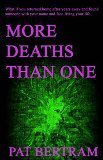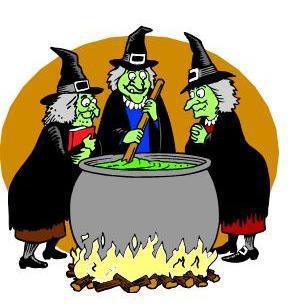Pat Bertram's Blog, page 253
November 9, 2012
When Describing Your Characters, Don’t Forget Their Hands.
 I’m not sure it’s true any more that a picture is worth a thousand words considering that a thousand words takes up only a few kilobytes of computer memory while a good high resolution picture takes up three to four megabytes. And anyway, it doesn’t take a thousand words to describe something so that it becomes real. It takes only a few words, if they are the right words, to create vivid portraits. The secret is to choose significant details — details that mean something, that promote the story, that evoke emotion — rather than to write long passages of trivia.
I’m not sure it’s true any more that a picture is worth a thousand words considering that a thousand words takes up only a few kilobytes of computer memory while a good high resolution picture takes up three to four megabytes. And anyway, it doesn’t take a thousand words to describe something so that it becomes real. It takes only a few words, if they are the right words, to create vivid portraits. The secret is to choose significant details — details that mean something, that promote the story, that evoke emotion — rather than to write long passages of trivia.
Take hands for example. By describing a character’s hands, we can describe the character. A man with manicured and buffed fingernails is different from one with grime permanently etched into his cuticles. A woman with bitten fingernails is different from one with dirty, broken nails, and both are different from a woman wearing designer acrylic nails. The color of nail polish a woman chooses tells us about her character. And clear nail polish on a man would tell us about his character.
We can describe hands in many ways: claw-like, thin, scrawny, big-knuckled, blue-veined, plump, fat, chubby, arthritic. Characters can have tattooed hands. They can wear gloves, a simple wedding band, or multiple rings on each finger.
Hands also do things. They wave, point, gesture, touch chins or noses, and each of these gestures and mannerisms tells us about the character. Hands can slap another character or caress a cheek, and such actions tell us about the relationship between the characters.
Here are a few examples of hands and what they do, taken from Light Bringer,.
The kid smoothed his neatly combed hair, swung his callused hands front to back as if he didn’t know what to do with them, then stuck them in his pockets.
Arthur Shillitani took his thin, long-fingered hands off the controls and slicked back his dark hair.
Rena studied her hands. . . . They were paler than usual, making the blue veins seem more prominent, and the nails were in need of a clipping, but otherwise they looked like the hands she’d lived with for the past thirty-seven years. What made them different from anyone else’s? What made her different?
Some examples from More Deaths Than One:
The staff sergeant was only 5’9” or 5’10”, but he had a powerful build with thick wrists, a massive chest, and hands that looked able to crush a larynx without any effort at all.
No one who crossed the threshold had the pampered arrogance of Evans’s men or the soft hands of a corporate drone.
The backs of his hands were crepey and mottled with age spots, but he seemed only about ten years older than Bob.
Kerry folded her hands primly in her lap, but her body seemed to vibrate with suppressed excitement.
And a couple of examples from Daughter Am I:
Mr. Browning shuffled through the papers on his massive black walnut desk. His age-mottled hands moved slowly, as if weighted by the six turquoise rings he wore.
Not hearing Happy, she looked back — he was heading her way, fumbling with his gun. He seemed to be trying to point it at the woods, but his hands shook so badly, the weapon wobbled all over the place.
So, when describing your character, don’t forget their hands. Hands make the character.
***
Pat Bertram is the author of the conspiracy novels Light Bringer, More Deaths Than One, A Spark of Heavenly Fire, and Daughter Am I. Bertram is also the author of Grief: The Great Yearning, “an exquisite book, wrenching to read, and at the same time full of profound truths.” Connect with Pat on Google+
Tagged: character, describing hands, description, gestures, mannerisms, picture worth a thousand words


November 8, 2012
35,000 Days and Counting
 Just by chance I discovered that in a couple of weeks my father will be 35,000 days old. Such an astonishing number of days should not go unacknowledged, so I’ve been trying to figure out various ways of illustrating that vast number of days.
Just by chance I discovered that in a couple of weeks my father will be 35,000 days old. Such an astonishing number of days should not go unacknowledged, so I’ve been trying to figure out various ways of illustrating that vast number of days.
I thought of giving him a jar of 35,000 bits of confetti in recognition of his days, but confetti comes in ounce packages, and I am not about to count out 35,000 pieces of anything. Can you imagine counting out 34,895 and then losing your place? Admittedly, I could count what was in one package and extrapolate from that how many packages I’d need, but still, there are a lot of pieces in those bags, and anyway, confetti has no significance to his life.
Perhaps give him 35,000 pennies? But 35,000 pennies would be 700 rolls, cost $350.00, and would weigh 210 pounds.
Perhaps licorice jelly beans? Considering that there are approximately 400 Jelly Belly jelly beans in a pound, I would need almost 88 pounds and at 8 dollars per pound, they would cost $704. Freight, however, would be free.
Perhaps personalized M&Ms? But 35,000 of them would cost more than $1,725, excluding freight. And anyway, they would just go to waste. He hates M&Ms.
He does like Snickers bars, so I considered sending him 35,000 calories of the candy, but that would be 125 bars. Since he’s almost 96 years old, it would take him the rest of his life to eat that many candy bars, and they would get stale long before then.
Perhaps 35 1000-piece jigsaw puzzles? But his fingers don’t work that well to manipulate those pieces, his eyesight is bad, and he never liked doing jigsaw puzzles. (Now, if my mother were still alive, I could get them for him and let her work them.)
In the end, I decided to print and cut out 35,000 copies of his initials, each one representing a day on this earth. Will take me about 12 hours to cut all of those bits of paper, but what the heck. It’s a wonderfully symbolic gesture.
I’ll also decorate the house, or at least his breakfast nook, to surprise him. (I haven’t mentioned the 35,000 days date to him, and if any of my siblings ruin the surprise, I will never forgive them.)
***
Pat Bertram is the author of the conspiracy novels Light Bringer, More Deaths Than One, A Spark of Heavenly Fire, and Daughter Am I. Bertram is also the author of Grief: The Great Yearning, “an exquisite book, wrenching to read, and at the same time full of profound truths.” Connect with Pat on Google+
Tagged: 35000 calories, 35000 days old, 35000 jelly beans, 35000 pennies, Snickers

November 7, 2012
Genre vs. Traditional Fiction
Yesterday I wrote about traditional stories, the kind of untagged, unlabeled, uncategorized and ungenrefied fiction we grew up on. There used to be certain sections for genres in libraries and bookstores, but most books were shelved alphabetically under “fiction.” I read all types of books without discrimination, but I found the most satisfying books not with the genre stories, but in with the general fiction. And that’s the kind of book I tried to write.
I don’t know why genre became the core of the book business rather than the peripheral it once was, but it’s probably because of marketing — as one editor who rejected Light Bringer told me, “I loved the story, and your writing is excellent, but I don’t know how to sell it. It doesn’t have enough science fiction elements to be science fiction, and it has too much science fiction to be anything else.” (The truth is, Light Bringer was never meant to be science fiction. It a traditional story based on both modern conspiracy theory and the Sumerian cosmology, though I admit, it does have elements that are construed as science fiction. Luckily, I eventually found a publisher who publishes traditional fiction as well as genre.)
I don’t know what came first — readers’ need to buy books that fit into certain categories or book marketers’ need to funnel readers into those categories, but it doesn’t really matter. Either way, this genreization of the book business makes me an outsider, both as a reader and a writer. I have a hard time sorting through the 130,000,000 million books available to find ones I want to read, and I have a hard time fitting my books into the available genres. (When I have to give a category, I say “conspiracy fiction.” That’s not a genre, or at least I don’t think it is, but it gives me a pithy and realistic way of labeling my books.)
 The hardest of my books to categorize, besides Light Bringer, is More Deaths Than One. It has many of the elements of a thriller, but the story is not about what happened to the main character (Bob) but who is he and how he reacts to what happened to him. In a thriller, there should be some sort of showdown between the hero and villain, but in More Deaths Than One, that showdown is given to an offscreen character, and Bob hears of it second hand. Some readers think the scene is a cheat. Even I think it’s a cheat, or rather I would think so if More Deaths Than One was a thriller. The hero should always be the one who performs the decisive action in the story, but in this case, the decisive action is not the discovery of the truth, but how Bob and Kerry (the woman he loves) deal with that truth.
The hardest of my books to categorize, besides Light Bringer, is More Deaths Than One. It has many of the elements of a thriller, but the story is not about what happened to the main character (Bob) but who is he and how he reacts to what happened to him. In a thriller, there should be some sort of showdown between the hero and villain, but in More Deaths Than One, that showdown is given to an offscreen character, and Bob hears of it second hand. Some readers think the scene is a cheat. Even I think it’s a cheat, or rather I would think so if More Deaths Than One was a thriller. The hero should always be the one who performs the decisive action in the story, but in this case, the decisive action is not the discovery of the truth, but how Bob and Kerry (the woman he loves) deal with that truth.
I could have had the showdown and then Bob and Kerry’s scene afterward, but then their scene becomes anti-climactic. I could have had the two scenes concurrent — the showdown and their reactions, but there is no way Bob would have opened up to her with a dangerous creature in the room. And most of all, he would never have brought her to the attention of the villain since he would have wanted to protect her at all costs.
You’d think that with the emphasis on the two characters that More Deaths Than One is romantic suspense, but it is far more than that (and far less. Those who have read it for romantic suspense don’t like it because the romance isn’t forefront. Nor is the conflict a romantic one — Bob and Kerry get along from the beginning). More Deaths Than One is traditional fiction — a story that demanded to be written in a certain way, regardless of any genre conventions.
As Mickey Hoffman, author of School of Lies and Deadly Traffic, said, “What are you waiting for? Read this book. Now. More Deaths Than One is much better than any ‘bestseller’ out there. The plot is constantly surprising and intricate, the characters draw you into the tale and the overall writing is top notch.”
***
Pat Bertram is the author of the conspiracy novels Light Bringer, More Deaths Than One, A Spark of Heavenly Fire, and Daughter Am I. Bertram is also the author of Grief: The Great Yearning, “an exquisite book, wrenching to read, and at the same time full of profound truths.” Connect with Pat on Google+
Tagged: genre and marketing, genre fiction, Mickey Hoffman, More Deaths Than One, traditional fiction


November 6, 2012
The Kind of Fiction I Grew Up On
On Malcom Campbell’s blog post yesterday, BOOK BITS: ‘Black Beauty,’ Plagiarism, Donna Small, Larry McMurtry’s ‘Custer,’ Book stories for the election, he described “traditional fiction” as the kind of fiction we grew up on before novels started getting whittled down to novella-lengths and forced into marketing categories. Dare I say, literary fiction is what’s left after publishers and booksellers have sliced and diced readers and books into every possible pigeonhole, slot and category they can possibly imagine? We are, I think, so scared of making our own decisions about what we read these days, that we cannot pick up a book without knowing how it’s been tagged, labeled, categorized and genrefied.”
Ah! Now I have a term for the sort of fiction I write, and it’s the perfect term — traditional fiction. My novels are not genre fiction in any way, and those who try to fit the stories into such pigeonholes end up not liking them. There is not enough romance for the romance readers, not enough horror for the apocalyptic crowd, not enough villainry for the thriller lovers, not enough grue for the horror aficionados, not enough science or fantasy for the scifi folks.
Each of those elements has a place in my books, of course, since each aspect is part of the story’s big picture (in the same way those elements make up the big picture of our lives), but none overwhelms the basic intent of my stories, which is to tell a satisfying tale with archetypal characters and classic themes that can last beyond the fads of the day. In other words, a traditional novel.
 In A Spark of Heavenly Fire, for example, there is plenty of horror, such as the gruesome end of those afflicted with the red death, but generally the horror is more subtle than visceral — empty streets instead of bodies piled everywhere, struggles to maintain a semblance of normality instead of rioting. The experiments done on humans during both the hot wars and the cold wars twentieth century are not experienced first hand by the characters, but the slow reveal of those old horrors affect them deeply nonetheless.
In A Spark of Heavenly Fire, for example, there is plenty of horror, such as the gruesome end of those afflicted with the red death, but generally the horror is more subtle than visceral — empty streets instead of bodies piled everywhere, struggles to maintain a semblance of normality instead of rioting. The experiments done on humans during both the hot wars and the cold wars twentieth century are not experienced first hand by the characters, but the slow reveal of those old horrors affect them deeply nonetheless.
A Spark of Heavenly Fire explores the theme of love in all its guises, not just romance, but friendship, caring, trust. There is love mixed in the villainry, too, because someone had to have lovingly created the organism that caused the red death. Unlike genre stories, there is no hero trying to stop the villain before he can release his “baby.” The deed had been committed before the story even began. We don’t see the story from the villain’s eyes as in a thriller, and it’s only at the end that we realize with what love and glee the villain had set his creation free.
More than horror or history, romance or mystery, A Spark of Heavenly Fire is the story of ordinary women who found only failure in the ordinary world where everyone else seemed to find success, but when the world turned upside down, they found their place and their worth, and they came alive. As Washington Irving wrote, “There is in every true woman’s heart, a spark of heavenly fire, which lies dormant in the broad daylight of prosperity, but which kindles up and beams and blazes in the dark hour of adversity.
This is the kind of fiction I grew up on as a reader, the sort of traditional story that digs deep so that what affects the characters also affects the readers, the sort of ungenrefied story I have always loved. And it’s the kind of fiction I grew up on as a writer. It was halfway through writing A Spark of Heavenly Fire that everything clicked and I became a writer.
Tagged: A Spark of Heavenly Fire, love in all its guises, story themes, traditional fiction, Washington Irving quote


November 5, 2012
If Everyone Wants Peace, Why are there Wars?
 Yesterday, along with thousands of other people, I blogged for peace. If you saw my peace post, you will know that my message focused on being at peace with the world rather than world peace. I don’t believe in “world peace” as a cause, though of course, I do wish for a world at peace.
Yesterday, along with thousands of other people, I blogged for peace. If you saw my peace post, you will know that my message focused on being at peace with the world rather than world peace. I don’t believe in “world peace” as a cause, though of course, I do wish for a world at peace.
I can feel your hackles rise and can hear your outraged “What sort of insensitive clod are you? How can you not believe in ‘world peace’ as a cause?” For the record, let me state that I, personally, have never started a war. I don’t think I’ve ever even bloodied another person accidentally or otherwise, and even if I were prone to violence, I still would not be creating world havoc. The truth is, wars don’t just happen. Wars are something politicians and other reprehensible characters create, and never on my behalf and always for their own ends. To say I believe in “world peace” would be like saying I believe in politicians telling the truth. It’s a nice sentiment, but isn’t going to happen until those creating the problem decide to stop creating it.
Traditionally, the United States is a peaceful country. Or at least its citizenry is. We have never wanted war. Politicians, military advisors, tycoons, and other greedy characters are the hawks among us, and they not only have created wars, they have inveigled us into accepting their dictates, sometimes on pain of death. During WWI, so many young men ignored the draft that the only way the warmongers could force them to fight in a war that 90% of USA citizens did not want was to make draft avoidance punishable by death.
A few years later, when world hostilities were fomented anew, the citizens of the USA again did not want to go to war. It took Roosevelt’s manipulations to get people irate enough to want to go. Some of you might have heard but do not believe that Roosevelt knew about the attack on Pearl Harbor and allowed it to occur anyway, but it is the truth. The USA and Britain had broken the purple codes (so-called because that was the color of the folder the codes were kept in) in time to warn those at Pearl Harbor, but Roosevelt and his hawkish advisors chose not to give the warning in order to coerce the USA into the war. (They did manage to move their newest and best warships and submarines out of the line of fire, though.)
Killing is not a basic instinct. Many of today’s — and yesterday’s — video games were developed by the military because studies had shown that repeated images of violence and death inured people to killing. During World War Two, as many as 85% of soldiers fired over enemies’ heads or did not fire at all. After World War Two, there was a concerted effort by the military to overcome this natural reluctance to kill, and apparently they succeeded because during close combat in Vietnam, only about 5% of soldiers failed to aim to kill. (These same desensitizing “games” were later released as toys for children. Is it any wonder that teens today seem desensitized to violence?)
Author Lee Child says that we don’t write what we know, we write what we fear, and that certainly is true in my case. I fear the machinations of the powerful, deadly, and calculating men and women who control our lives behind the scenes. This theme is most prevalent in More Deaths Than One (in fact, I came across the information about desensitization while researching the military, soldiers, and killing for that particular novel) though it shows up in milder forms in all of my novels.
So see? We are naturally a peaceful people who do not want war. It is others who force it on us whether we wish it or not.
***
Pat Bertram is the author of the conspiracy novels Light Bringer, More Deaths Than One, A Spark of Heavenly Fire, and Daughter Am I. Bertram is also the author of Grief: The Great Yearning, “an exquisite book, wrenching to read, and at the same time full of profound truths.” Connect with Pat on Google+
Tagged: is killing a basic instinct, peace blog, postaday, video games and insensitivity to violence, world peace, WWII shoot to kill

November 4, 2012
Dona Nobis Pacem
Thousands of bloggers from all over the globe are Blogging for Peace today.
One subject. One voice. One day.
Words are powerful . . . this matters.
Tagged: blog blast for peace, blogging for peace, Dona Nobis Pacem, words are powerful, words matter


November 3, 2012
The Worst Books by the Best Writers
 I got an email today from someone at oedb.org (Online Education Database) asking me to share an article with my blog readers. Generally, I ignore such requests, partly because the articles seldom have anything to do with the topics covered in this blog, and partly because . . . well, this is my blog and my personal soapbox. But I am making an exception in this particular case because I liked the following introduction to the article, ”The Worst Books by the Best Writers.”
I got an email today from someone at oedb.org (Online Education Database) asking me to share an article with my blog readers. Generally, I ignore such requests, partly because the articles seldom have anything to do with the topics covered in this blog, and partly because . . . well, this is my blog and my personal soapbox. But I am making an exception in this particular case because I liked the following introduction to the article, ”The Worst Books by the Best Writers.”
It is said that even a blind pig finds a truffle now and then. That may be true, but writing a good book (despite what so many deluded amateurs seem to believe) is exceedingly difficult. A lousy writer is unlikely, under even the best circumstances, to produce a novel of any value. The reverse, however, unfortunately happens quite easily. The finest writer, if prolific enough, is still practically guaranteed to come up with a couple of duds. Lest anyone mistake the spirit of this inquiry, in which we look at failures on the part of authors whose reputations remain unimpeachable, let it be understood that our choices, though bound to rankle in some cases, are not meant to offend. It may be that we can learn something from great novelists’ misfires, perhaps as much as we can from their successes.
You can find the rest of the article and the list here: The Worst Books By the Best Authors.
Quite frankly, I’m not sure that I consider any of those writers to be the best. (They list Ernest Hemingway, DH Lawrence, John Updike, Tom Wolfe, S.E. Sinton, Kurt Vonnegut, Flannery O’Conner, Bob Dylan, Alice Sebold, Jeffrey Eugenides). I know don’t remember being particularly enamored of any of their books. But still, the person who wrote the article has a good point, that we can learn to be better writers by considering books that missed the mark.
My current concern is that except for a select group of writers and perspicacious readers, few people seem to value good writing or good books, let alone great books. In a world where everything has devolved into opinion, and one person’s uninformed opinion is the same another’s studied judgement, the only books anyone seems to care about are those that sell, usually because of some sort of titillation, whether erotica or violence. I sound jaded, I know, but what passes for good writing today makes me want to weep. If by chance the writing is okay, the story is often trivial, which is just as bad. Triviality is not the mark of a great writer.
It won’t be too long before literature degrades to the point where all we can do is celebrate the best books by the worst writers.
Tagged: oedb.org, Online Education Database, the best writers, the worst books

November 2, 2012
I’m going to Blog for Peace. Will You?
 On Sunday, November 4, people all over the planet blog for peace. This year, I’m going to join the the Blog Blast for Peace, and you can join the movement, too. You make your own peace globe/statement or simply choose one pre-made at blogblastforpeace.com, and become – a peace blogger. http://goo.gl/wOaGs
On Sunday, November 4, people all over the planet blog for peace. This year, I’m going to join the the Blog Blast for Peace, and you can join the movement, too. You make your own peace globe/statement or simply choose one pre-made at blogblastforpeace.com, and become – a peace blogger. http://goo.gl/wOaGs
Peace bloggers believe that words are powerful, and that this matters. http://goo.gl/b01KH
So, check out the website or check it out on Facebook.
How To Blog For Peace The short version:
1. Choose any graphic on this page. http://goo.gl/4xepL Right click and Save. Decorate it and sign it, or leave as is.
2. Send the finished globe to blogblast4peace@yahoo.com
3. Post it anywhere online November 4 and title your post Dona Nobis Pacem (Latin for Grant us Peace)
Sounds cool, doesn’t it?
Tagged: Blog 4 peace, blog blast for peace, November 4, Peace Bloggers

November 1, 2012
The Surprising Power of Grief
 The power of grief still manages to surprise me. I thought I was moving beyond its reach, but apparently, no matter how well I do, it still has the power to bring me low.
The power of grief still manages to surprise me. I thought I was moving beyond its reach, but apparently, no matter how well I do, it still has the power to bring me low.
I haven’t had a major upsurge of grief for quite a while now. (I can’t remember the last time, to be honest.) Partly, I’ve been aware of my triggers, such as Saturday (the day he died), and being hungry, angry, lonely, tired (H.A.L.T.) and I am especially careful at those times. I’ve put away his photo so I don’t catch sight of it unawares, and I try to look forward, not backward. Still, despite all that, yesterday grief came sweeping into my life, and I had to let it run its course.
Why yesterday? Perhaps because I’m keeping busy as the week heads into Saturday and I maintain that busyness as the new week leaves Saturday behind, so that now I am most vulnerable in the middle of the week when my guard is down.
Perhaps because it was Halloween, and traditionally, Halloween is the night when the dead are closest to us here on Earth.
Perhaps because on Tuesday, for the first time, I felt as if I were awakening to life again. Every step forward seems to be celebrated with an upsurge of grief at what is being left behind, and this was an immense step that could only be celebrated with an immense upsurge of grief.
Or perhaps there was no reason at all.
My life mate/soul mate died two and a half years ago, and despite all those months of grieving, despite all the thousands of words I have written to make sense of what I experienced, I still do not completely understand the forces at work when it comes to grief. All I can do when grief hits is what anyone does in a storm — ride it out the best I can and wait for the calm.
***
Pat Bertram is the author of the conspiracy novels Light Bringer, More Deaths Than One, A Spark of Heavenly Fire, and Daughter Am I. Bertram is also the author of Grief: The Great Yearning, “an exquisite book, wrenching to read, and at the same time full of profound truths.” Connect with Pat on Google+
Tagged: awakening to life, grief and Halloween, grief and loss, power of grief, what to do when grief hits

October 31, 2012
The Queen of the Witches by Pat Bertram — A Halloween Fable Just for Fun
Once upon a time,
Long ago and far away,
Lived the queen of the witches,
Griselda the Gray.
If you think all witches are tall and thin,
You are wrong about that.
Griselda the Gray was short
And extremely fat.
Like everyone else,
Griselda tried to be good.
Griselda never did anything bad
Like normal witches should.
This upset the other witches
Because they had to copy their queen.
They had to be nice
When they wanted to be mean.
So they all got together
And mixed up a brew.
They gave it to Griselda
When they were all through.
The brew was so rotten
Griselda had a fit.
She screamed and yelled
And hollered and bit;
She howled and cackled
And made such a noise
That the other witches were happy
And began to rejoice.
“Griselda is bad
And we are glad.
Griselda is ghastly
So now we can be nasty.
Oh, what a happy, horrible day!
Hurrah for our queen, Griselda the Gray!”
The moral of this story is that witches should
Never try to be very good.
***
Pat Bertram is the author of the conspiracy novels Light Bringer, More Deaths Than One, A Spark of Heavenly Fire, and Daughter Am I. Bertram is also the author of Grief: The Great Yearning, “an exquisite book, wrenching to read, and at the same time full of profound truths.” Connect with Pat on Google+
Tagged: fable, Griselda the Gray, halloween, moral, story, story in rhyme






